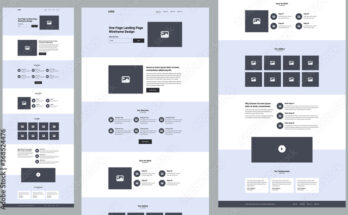1. Executive Summary
Nearly three decades after its debut, Java remains the undisputed backbone of enterprise software. Despite the rise of modern contenders like Go, Rust, and Python, Java continues to power most mission-critical systems across industries — from banking and telecom to e-commerce and healthcare.
According to the JetBrains Developer Ecosystem Report 2024, over 60% of enterprise-grade applications still rely on Java. Its combination of stability, scalability, and cross-platform reliability has allowed it to evolve with — not against — the needs of modern businesses. With Java 21 LTS, Virtual Threads (Project Loom), and GraalVM, the language has adapted to a cloud-native, high-performance world without sacrificing its enterprise DNA.
For companies that prioritize control, reliability, and long-term ROI, Java remains the most predictable and future-proof foundation for backend and enterprise systems in 2025.
2. From Legacy to Modern Java: A Brief Evolution
When Java launched in 1995, its promise — “write once, run anywhere” — redefined software portability. By the early 2000s, J2EE became the default standard for enterprise applications. Banks, governments, and telecom providers adopted it en masse because it delivered what they valued most: reliability and strong typing.
The 2010s brought Spring Framework and microservices, signaling Java’s reinvention as a more flexible, developer-friendly ecosystem. And in the 2020s, Java fully embraced cloud-native principles. With Spring Boot, Quarkus, and Micronaut, developers could build lightweight, containerized applications that scaled across hybrid environments.
Today, Java is not a legacy artifact — it’s a continuously modernized ecosystem that supports both heritage systems and next-generation workloads.
3. Why Java Still Dominates the Enterprise Landscape
a) Reliability and Maturity
Enterprise software depends on predictability. Java’s runtime stability, type safety, and backward compatibility make it ideal for high-stakes systems.
Oracle estimates that over 80% of global financial transactions still pass through Java-based systems. Each LTS version is supported for years, giving enterprises the confidence to plan long-term development and maintenance.
b) Scalability and Performance
With Virtual Threads (Java 21), Java can now handle thousands of concurrent connections with minimal overhead — perfect for modern APIs and real-time processing.
A 2024 InfoQ report found that companies migrating from Java 11 to Java 21 saw performance gains of up to 40% in concurrency-heavy workloads.
c) Platform Independence
Java’s ability to run seamlessly across operating systems, on-premise servers, and cloud platforms remains unmatched. With GraalVM, Java applications now start faster and consume less memory — enabling efficient deployments even in serverless environments.
d) Enterprise Ecosystem Integration
Java connects deeply with enterprise stacks — Spring Cloud, Kafka, SAP, Oracle DB, Kubernetes — making it a natural choice for complex, integrated environments.
4. Strengths of Java in Enterprise Development
1. Long-Term Stability
With consistent LTS releases (Java 17, 21, and upcoming 25) and vendor support from Oracle, Red Hat, and Azul, Java provides stability few technologies can match. For companies building multi-year platforms, that matters more than hype.
2. Security and Compliance
Java’s architecture and memory safety mechanisms reduce vulnerabilities. According to Synk’s 2024 Open Source Security Report, Java projects resolve security issues 25% faster on average than those built on Python or PHP.
3. Developer Availability
Java remains one of the most widely used programming languages, with 9 million active developers globally (SlashData Developer Population Report 2024). This makes it easier to scale teams or find enterprise-grade expertise.
4. Mature Tooling and Ecosystem
From IntelliJ IDEA and Eclipse to Maven, Gradle, and Jenkins, Java developers benefit from an ecosystem designed for collaboration, automation, and scalability — essential for large distributed teams.
5. Backward Compatibility
Unlike faster-moving ecosystems, Java ensures migration paths. Enterprises can modernize incrementally — refactoring code, adopting newer frameworks, or containerizing workloads — without rewriting core business logic.
5. Weaknesses and Misconceptions
1. Perception of Slowness
Java’s reputation for sluggish performance dates back to the early 2000s. Modern Just-In-Time (JIT) compilers, GraalVM, and JVM optimizations have largely eliminated those concerns. In many cases, Java 21 backends rival Go or Node.js in throughput.
2. Verbosity
Older Java codebases were bloated with boilerplate. But records, pattern matching, and the var keyword have simplified modern codebases by up to 40% (JetBrains 2024). Frameworks like Lombok and Spring Boot further reduce repetitive syntax.
3. Slow Startup
Cold-start times were once problematic in serverless environments. With GraalVM native images, startup times now drop from several seconds to milliseconds — making Java viable for microservices and FaaS deployments.
4. Legacy Complexity
Enterprises often blame Java for outdated monoliths — when the real culprit is architectural neglect. With Spring Boot, Quarkus, and containerization, these legacy systems can be modularized and modernized efficiently.
6. When to Choose Java
- Financial and compliance-driven platforms: Java’s proven security and long-term support are unmatched.
- High-load backends and APIs: Virtual Threads and reactive programming deliver exceptional concurrency.
- Multi-cloud and hybrid environments: Java runs consistently across AWS, Azure, and GCP.
- Large or distributed teams: Strong conventions, tooling, and onboarding speed make collaboration smoother.
- Systems requiring decades of stability: ERPs, logistics platforms, insurance and banking systems, and telecom infrastructure.
Startups often begin with Python or Node.js for fast MVP delivery. But as systems grow, performance and stability needs bring many back to Java backend development — a pattern seen repeatedly across fintech and SaaS sectors.
7. Market Data: The Numbers Behind Java’s Dominance
- JetBrains 2024 Developer Ecosystem Report:
Java remains the #1 backend language for enterprise projects, with 59% of developers using it in production. - RedMonk Language Rankings (2025):
Java continues to hold a top-three global position. - Statista IT Market 2025:
Java powers ~32% of backend enterprise systems across finance, logistics, and healthcare. - Gartner Forecast 2024–2028:
Enterprise Java maintenance and modernization services will grow at a 7.1% CAGR. - IDC Global 2000 Survey (2024):
64% of large enterprises plan to extend or modernize their Java infrastructure rather than migrate away.
These numbers paint a clear picture: enterprises aren’t leaving Java — they’re investing in making it even stronger.
8. Java’s Future: 2025–2030 Outlook
The next decade will see Java evolve faster than ever:
- AI & Machine Learning Integration:
GraalPy and Deep Java Library (DJL) bridge Java with AI ecosystems. - Cloud-Native Acceleration:
Lightweight frameworks (Spring Boot 3, Quarkus, Micronaut) optimize startup and runtime performance. - Structured Concurrency:
Virtual Threads make parallel programming simpler, faster, and more resource-efficient. - Sustainability & Efficiency:
JVM optimizations now reduce CPU load, aligning with enterprise sustainability goals.
As O’Reilly Radar (2024) put it: “Java has not aged — it has evolved.” The language that once powered monoliths now drives modern, distributed, cloud-native architectures.
9. Conclusion
In a world obsessed with the “next big thing,” Java proves that endurance can be more valuable than novelty. It continues to power the global digital economy because it evolves with its users — adapting to the cloud, AI, and modern development paradigms while maintaining its foundational strengths.
For CTOs and product leaders evaluating long-term technology stacks, Java enterprise development remains the most dependable path to security, scalability, and longevity.
In 2025 and beyond, the backbone of enterprise software still speaks one language — Java.
10. References
- JetBrains Developer Ecosystem Report 2024
- Red Hat State of Enterprise Java 2024
- Oracle Java 21 Documentation
- Statista IT Market Data 2024–2025
- Gartner: Top Strategic Technology Trends 2025
- Synk Open Source Security Report 2024
- SlashData Developer Population Report 2024
- O’Reilly Radar 2024




